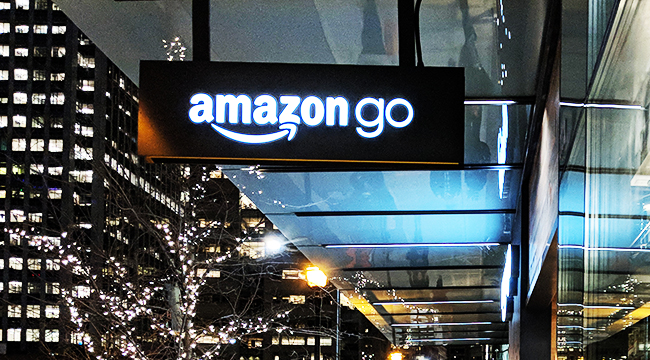
Today, Amazon’s new grocery store concept, Amazon Go, first revealed nearly a year ago, is going live. The Seattle concept will supposedly be a revolution in how stuff is sold, cutting humans out of the equation entirely. One small problem, though; Amazon isn’t the first to try this, and it may not be able to engineer out the problems that killed the other ideas.
The concept of Amazon Go is simple. You download an app, just made available today, on your phone, and boot it up when you go into the store. The app tracks everything you pull off the shelves, and simply charges everything you walk out the door with to a credit card which you’ve pre-connected. No cashiers, no lines, no problem.
If it sounds so simple you can’t believe nobody’s tried it before, they have. Invented by Clarence Saunders — best known for creating the modern supermarket with Piggly Wiggly — Keedoozle is Amazon Go with analog technology; mostly packaged goods, mostly automated, designed with eliminating as many labor costs as possible. It failed at the time amid arguments that the technology was too advanced for the time and customers just didn’t “get it.”
Back in 2008 the experts argued, “Surely the time will come.” So has it? Perhaps. It’s worth remembering that customer value is second, here; labor is the highest cost for any business, so the appeal to the company is clear. But customers, or at least Americans, seem to actively hate automated tech in stores. British retailer Tesco’s attempt to break into the US failed in part because the company’s taste for self-checkout lanes annoyed shoppers. Not even the guy who invented self-checkout lanes can use them effectively and major American retailers like CVS are ripping out self-checkout lanes altogether.
It’s not that there isn’t room for this technology; Starbucks replaced giving your order to a barista with an app and saw explosive success. It’s just that in order to lift off, it’ll have to be insanely easy and save time. Those are the keys. And if anyone could make the idea come to fruition, it’s Amazon.
(via Android Police)
